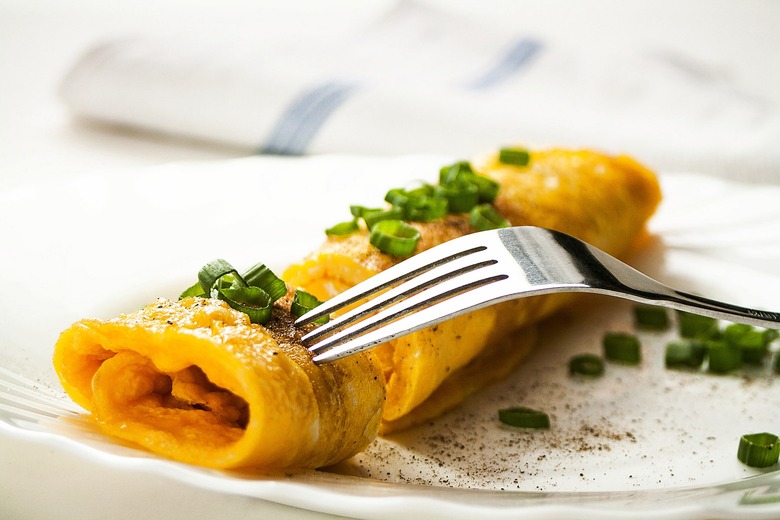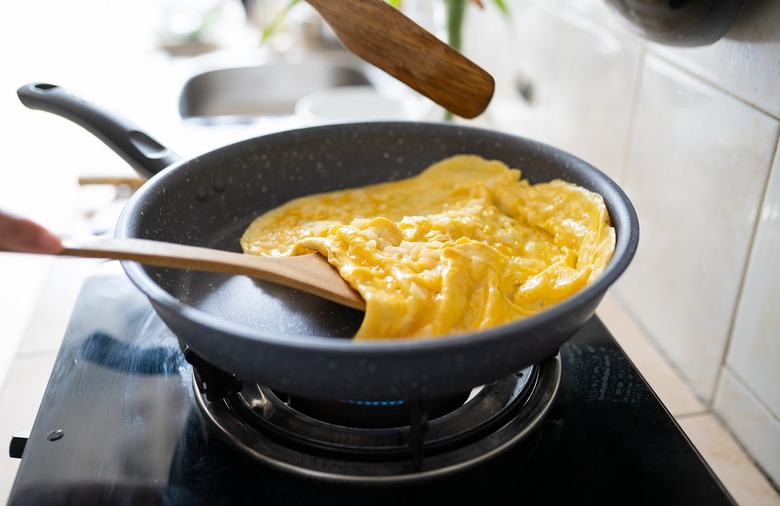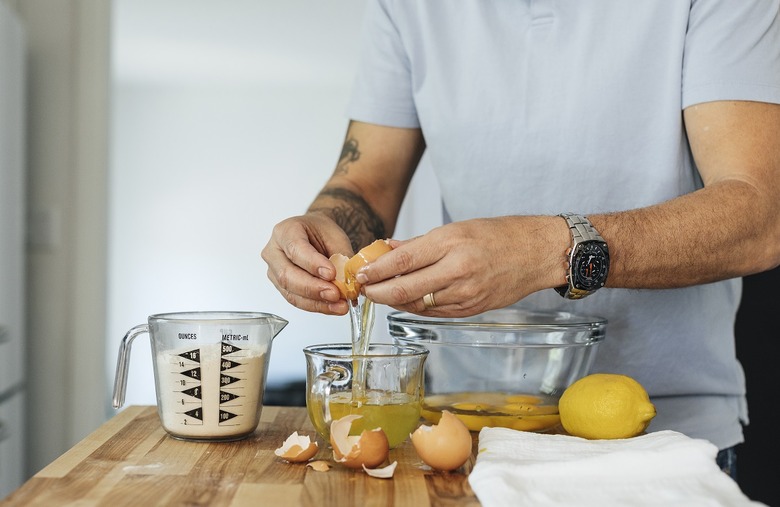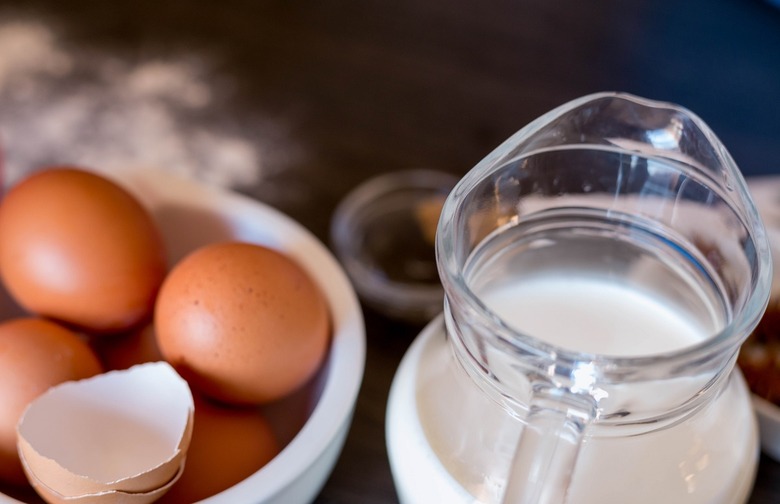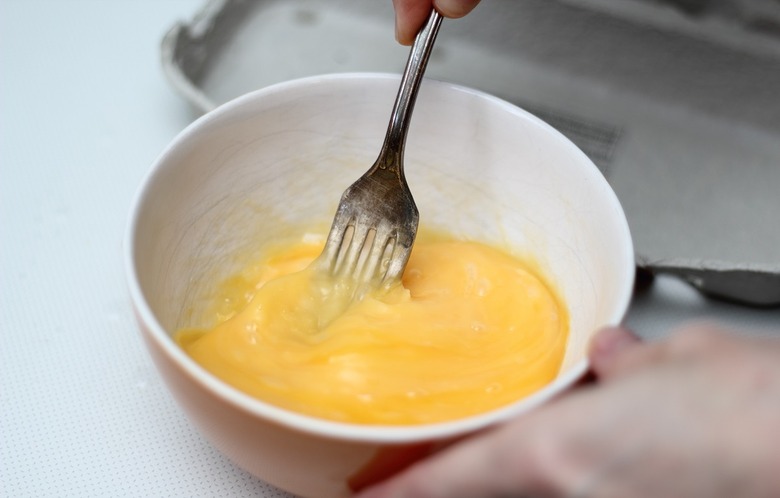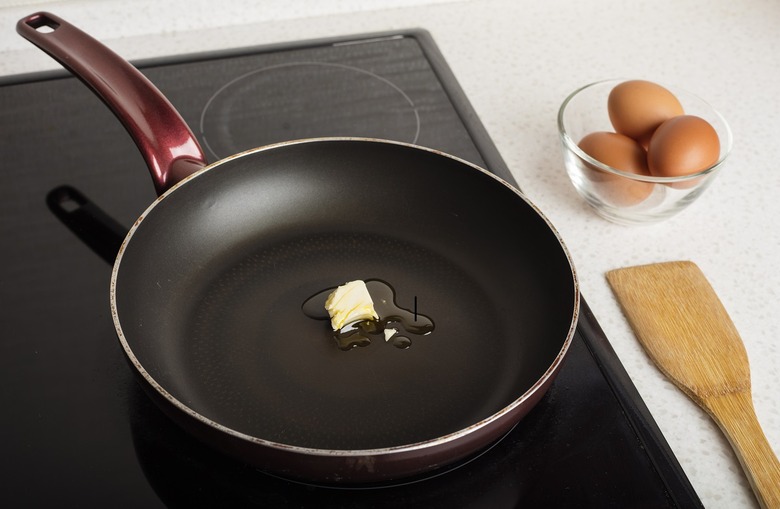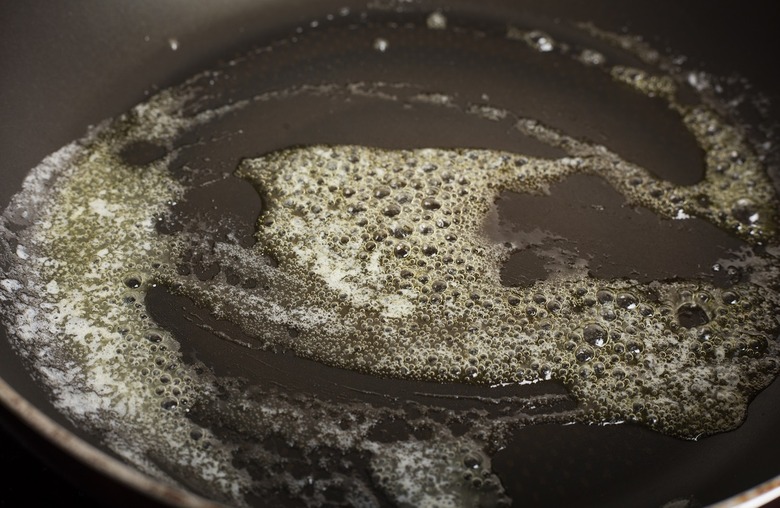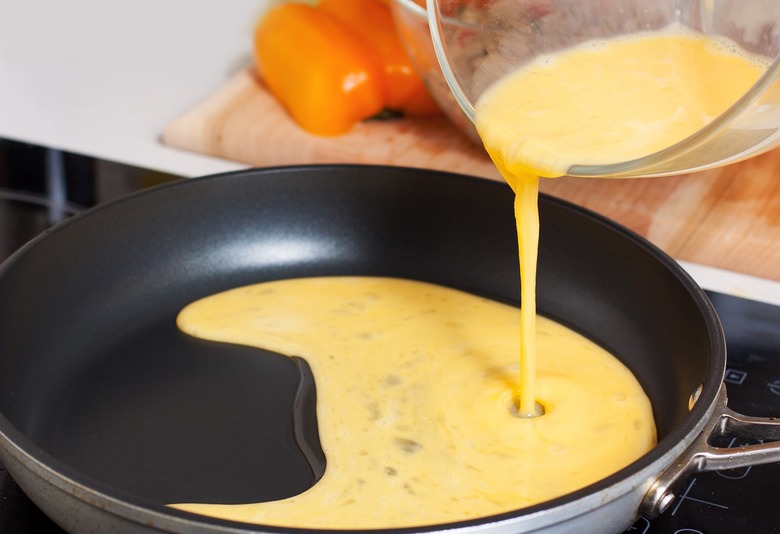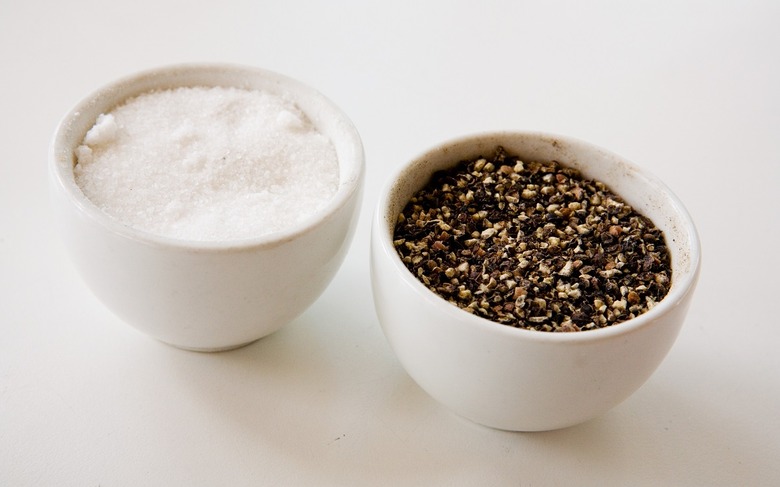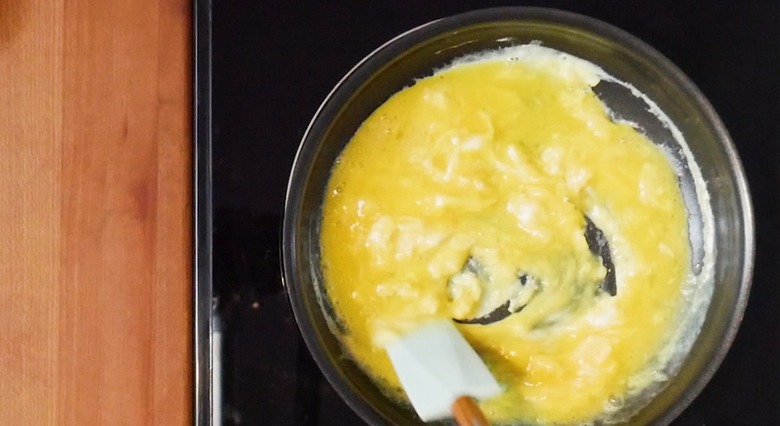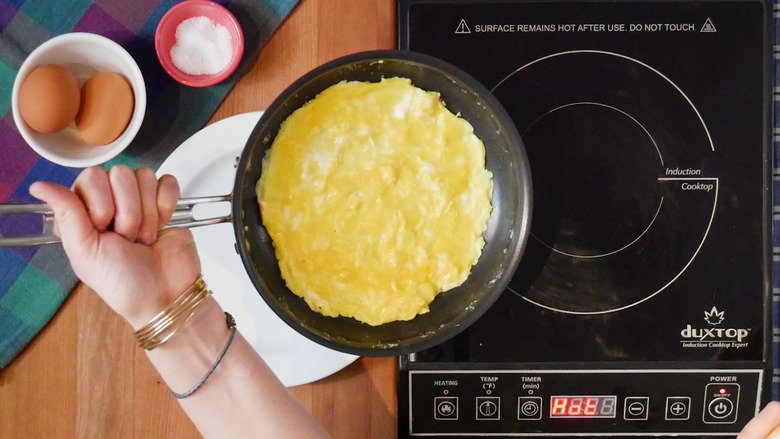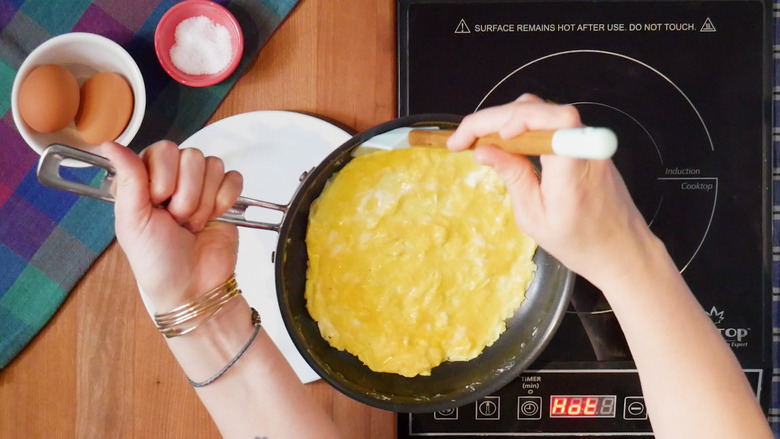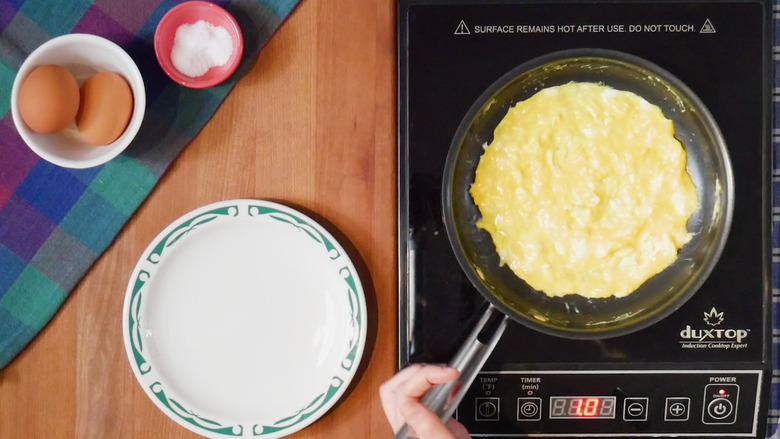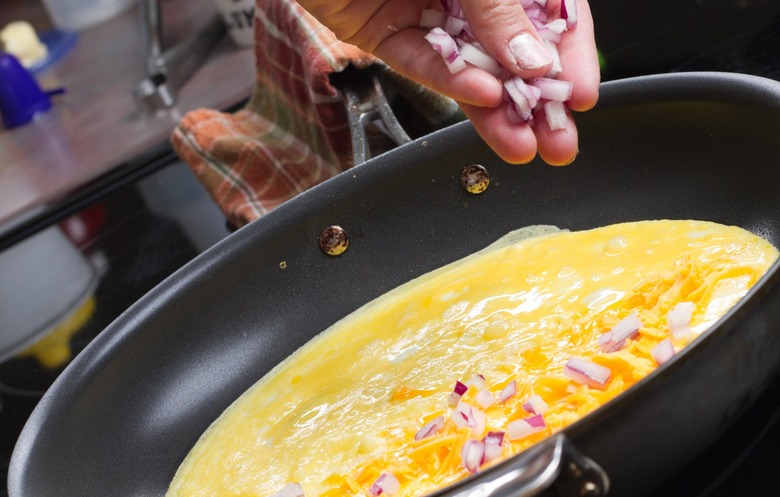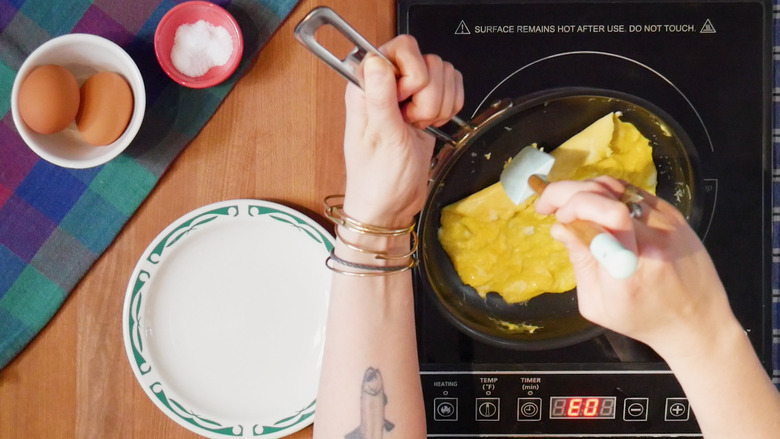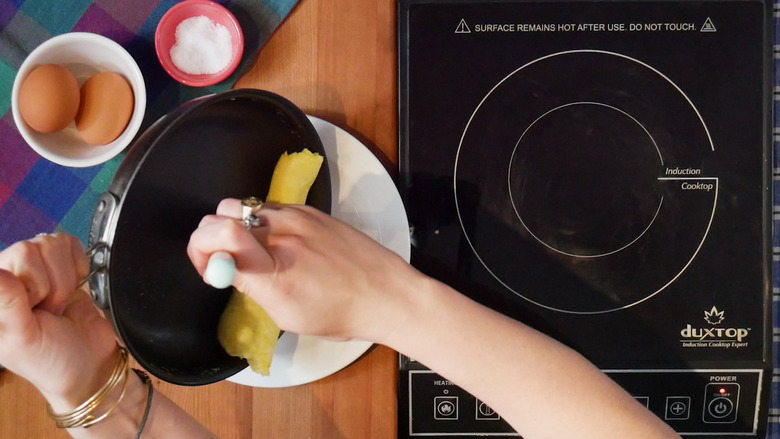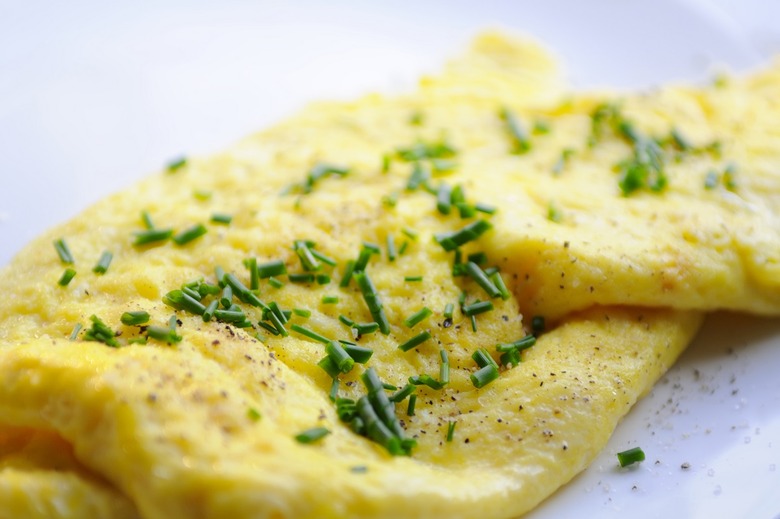How To Make The Perfect Omelet Every Time
If you've ever had a really bad omelet, then you know the value of a perfectly cooked one. But despite being one of the most popular breakfast foods around, making a flawlessly fluffy omelet isn't easy — but it's not impossible. Master this essential technique and impress your brunch guests with your superior omelet-making skills by following the simple steps outlined below that will have you cooking omelets like a pro.
Gather your tools
There are a few common kitchen tools you'll need before getting started on your omelet making adventure. A nonstick pan is an essential piece of the puzzle. This will ensure that the omelet is easy to flip and doesn't leave bits and pieces of egg stuck to the pan's base. You will also need a medium-sized bowl, a wooden spoon, a fork and a stove top or hot plate. Be sure to have a plate close by to display your masterpiece when it's finished so it doesn't sit in the pan and become overcooked.
Get your ingredients ready
Since there is little more to an omelet than eggs, using the freshest eggs possible will keep the texture of your omelet at its best. The membrane begins to break down in older eggs, making the white more fluid and providing less body. Additionally, you will need plenty of butter — at least three pats per omelet — and your filling. Opt for the season's freshest vegetables or keep it simple and load that baby up with a cheese of your choice.
Add water or milk
Once you have cracked your eggs into a medium mixing bowl, add a splash of milk or water. This extra step will release steam during the cooking process and prevent your eggs from browning or becoming overcooked. It's a cooking hack every home cook should know.
Whisk the eggs
Like scrambled eggs, the key to a fluffy omelet is generously whisking the eggs. A fork is preferable to a whisk because your goal here is simply to incorporate the whites with the yolks, not to add additional air. You will know your eggs are ready when you pull the fork up and a homogenous stream of egg runs off without any white streaks.
Heat your skillet
Now, let's get to the actual cooking. Place your skillet on the burner and turn to medium or medium-low heat. Add a generous pat of butter. You shouldn't hear a sizzle. Wait for the butter to melt.
Test for a hot skillet
You will know your skillet is ready when you see the first small bubbles forming in the butter. If your butter is loudly sizzling and browning, you will need to turn the heat lower and start over.
Add your egg mixture
There are more than 100 ways to cook an egg, but plenty of them involve adding the protein to a hot pan. Once you see the first small bubbles of butter appear, add your egg mixture. Again, there shouldn't be a sizzle. If you hear a sizzle, don't panic, just turn down the heat.
Season the eggs
You can season your eggs in the pan to your liking. Use salt and pepper, but also feel free to get creative and toss in some curry powder, bouillon or other unexpected ingredients that go great with eggs. It's important that you season the eggs before you start stirring so that the omelet is evenly seasoned. If you don't want your omelet visibly speckled with pepper you can use white pepper, but remember that white pepper is hotter than black pepper.
Stir the eggs
The next three steps are the most important when cooking this high protein breakfast and are done simultaneously. Now that you have added your seasoning, begin to gently stir or scramble the omelet with a wooden spoon. This will keep the omelet from sticking to the bottom of the pan.
Shake the pan
While you are stirring the omelet, shake the pan in a circular motion to aid with the stirring. This will also help to keep the omelet moving so it doesn't stick to the pan and ensure that it cooks evenly.
Scrape down the sides
Finally, all of that scrambling and shaking is sure to splash egg mixture up the sides of the pan. Scrape the sides of the pan as you go to keep the edges of the omelet from overcooking. The key here is an evenly cooked omelet. This whole process also slows the cooking down, so don't be surprised if your omelet takes longer to cook than you expected.
Rest the omelet
Once you are satisfied with your omelet's doneness, remove the pan from the heat and allow the omelet to rest in the pan for about a minute. This will finish cooking the bottom of the omelet.
Add the filling
Roll your omelet
Hold the skillet in one hand. Tilt the skillet away from you slightly. Then, using a wooden spoon, gently roll the omelet. You can add a pat of butter as you roll to help loosen the omelet from the pan.
Flip your omelet
Once the omelet is rolled, you will need to transfer it to your serving plate. To do this, simply tip the pan in one fluid motion over the plate. You can adjust the omelet once on the plate so that the seam is on the bottom.
Garnish
To garnish the omelet, rub with the final pat of butter to give it a shiny look. Then sprinkle with freshly chopped herbs, like chives, parsley or chervil. Enjoy your classic French omelet and relish knowing that you've perfected one of the 12 essential ways to cook an egg.
More from The Daily Meal:
Recipes That Use A Lot of Eggs
